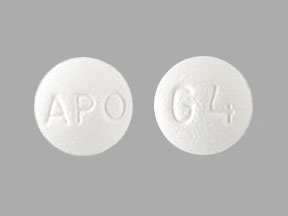
Galantamine Coupons & Savings Card – Discount Prices from $34.38
My prescription
Edit
4MG, Galantamine (180 Tablets)
Select pharmacy

CVS
$34.38
COUPON PRICE
Walmart
$62.64
COUPON PRICE
Walgreens
$83.70
COUPON PRICE
Albertsons
$89.75
COUPON PRICEGalantamine savings card
Show this card to your pharmacist
CVS
$34.38
BIN
ID
PCN
GRP
019876
LH9F274ECD
CHIPPO
LHX
Powered by
Related cholinesterase inhibitors prescriptions
More prescriptions for Alzheimer's disease
Related cholinesterase inhibitors prescriptions
More prescriptions for Alzheimer's disease
Galantamine dosage forms
Dosage Quantity Price from Per unit 4MG 180 Tablets $34.38 $0.19 4MG 1 Tablet $2.73 $2.73 4MG 30 Tablets $9.52 $0.32 4MG 60 Tablets $16.54 $0.28 8MG 60 Tablets $26.34 $0.44 8MG 180 Tablets $43.02 $0.24 12MG 60 Tablets $29.40 $0.49 12MG 180 Tablets $52.20 $0.29
| Dosage | Quantity | Price from | Per unit |
|---|---|---|---|
| 4MG | 180 Tablets | $34.38 | $0.19 |
| 4MG | 1 Tablet | $2.73 | $2.73 |
| 4MG | 30 Tablets | $9.52 | $0.32 |
| 4MG | 60 Tablets | $16.54 | $0.28 |
| 8MG | 60 Tablets | $26.34 | $0.44 |
| 8MG | 180 Tablets | $43.02 | $0.24 |
| 12MG | 60 Tablets | $29.40 | $0.49 |
| 12MG | 180 Tablets | $52.20 | $0.29 |
Galantamine Warnings
This document outlines important safety information and warnings related to the use of galantamine. It is crucial to understand these risks and take necessary precautions. If you have any concerns or experience any unusual symptoms, contact your healthcare provider promptly.
Serious Skin Reactions: Though infrequent, galantamine may cause severe skin reactions. If you notice a rash, inform your healthcare provider immediately, as discontinuation of the medication may be necessary.
Slowed Heartbeat and Fainting: Galantamine can lead to a reduced heart rate, which may result in fainting. Report any instances of falls or feelings of lightheadedness to your healthcare provider.
Stomach Ulcers and Bleeding: This medication can increase stomach acid production, raising the risk of ulcers and bleeding. The use of nonsteroidal anti-inflammatory drugs (NSAIDs), often present in over-the-counter cold and pain medications, can further elevate this risk. It is advisable to avoid combining these medications with galantamine. Contact your healthcare provider if you experience worsening stomach upset, heartburn, or indigestion, especially if you have a history of stomach ulcers or bleeding.
Seizures: There is a potential risk of seizures associated with galantamine use. If you suspect you have had a seizure, seek medical advice immediately.
No specific contraindications are noted for galantamine, but it is always recommended to discuss your medical history with your healthcare provider to ensure safe use of this medication.
Galantamine Side Effects
Common side effects:
- nausea
- vomiting
- dizziness
- diarrhea
- low appetite
- headache
- weight loss
Less common but important to monitor:
- upset stomach
- stomach pain
- sleepiness
- tiredness
- weakness
- falls
- shakiness
- depression
Serious side effects:
- slow heartbeat
- difficulty urinating
- seizures
- black or bloody stools
- vomit resembling coffee grounds
- severe stomach or abdominal pain
- fast or irregular heartbeat
- severe dizziness
- fainting
- chest pain
- rash
- itching
- swelling of the face, tongue, or throat
- trouble breathing
Galantamine Interactions
Interactions with high risk of serious adverse effects and should be avoided:
- Bepridil
- Cisapride
- Dronedarone
- Mesoridazine
- Pimozide
- Piperaquine
- Saquinavir
- Sparfloxacin
- Terfenadine
- Thioridazine
- Ziprasidone
- Benzgalantamine
Interactions with moderate risk that may require dose adjustment, closer monitoring, or timing changes:
- Amiodarone
- Aripiprazole
- Buprenorphine
- Chloroquine
- Clarithromycin
- Fluoxetine
- Hydroxychloroquine
- Methadone
- Quetiapine
Interactions with low risk that usually do not require a change in therapy:
- Amitriptyline
- Fluvoxamine
- Ketoconazole
- Oxybutynin
- Paroxetine
- Quinidine
- Tolterodine
